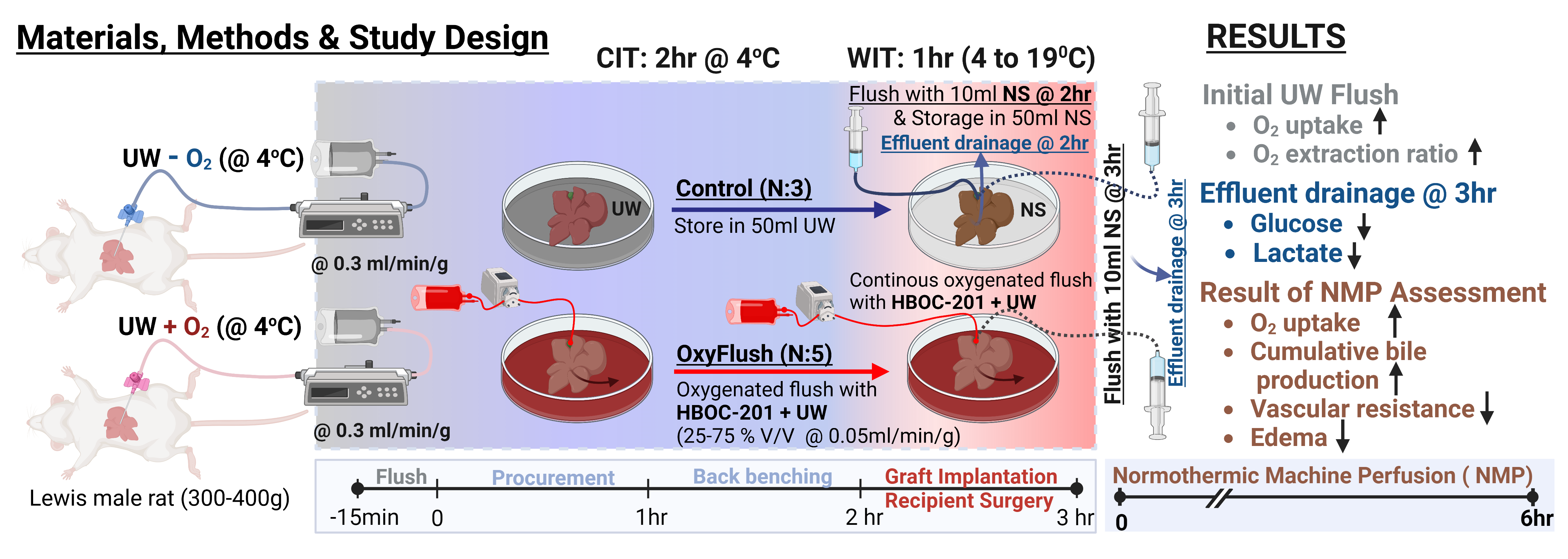Anil Kharga, United States has been granted the IXA Congress Scientific Award

Utilization of oxygenated hemopure based University of Wisconsin solution during simulated procurement, back-benching, and graft implantation to minimize ischemic reperfusion injury in a rat liver transplantation simulated on pump
Anil Kharga1,2, Huyun Chen2, Mclean Taggart2, Mohammadreza Mojoudi2, Heidi Yeh1, Korkut Uygun2, James F Markmann1.
1Center for Transplantation Sciences, Department of Surgery, Massachusetts General Hospital, Harvard Medical School, Boston, MA, United States; 2Center for Engineering in Medicine and Surgery, Massachusetts General Hospital, Harvard Medical School, Boston, MA, United States
Markmann lab. Uygun lab.
Introduction: Ischemia-free techniques for organ preservation from procurement to graft implantation using Normothermic Machine Perfusion (NMP) have been used for marginal liver intra-facility transplantation [1]. However, it requires an expensive perfusion device and a dedicated perfusionist, and to overcome these limitations, we have explored the benefits of a continuous slow cold flush in an intravenous (IV) drip fashion using the University of Wisconsin Cold Storage Solution (UW-CSS) oxygenated with Hemopure (HBOC-201), a hemoglobin-based oxygen carrier (HBOC).
Cold continuous oxygenated flush removes metabolic waste without the need for a dialysis system while still meeting the lower O2 demand at 4oC [2,3]. This protocol helps to achieve simplified & cost-effective hypothermic ischemia-free conditions during simulated procurement and back-benching, decreasing cold ischemic time (CIT) and warm ischemic time (WIT) during gradual rewarming in simulated graft implantation in the recipient.
Oxygenated solutions will help prevent primary graft dysfunction from Ischemia-Reperfusion Injury (IRI) by minimizing CIT and WIT, ultimately resulting in better graft utilization from an already limited available donor pool.
Methods:
1. Initial Flush during procurement (after cross-clamping): 15min @ 0.3ml/min/g
2. For the next 3hrs: Simulated 2hr CIT of procurement + back-benching and 1hr WIT of Graft Implantation (simulated sew-in) with controlled gradual rewarming
Flushing out preservative solutions with 10ml NS just before the start of NMP in both groups.
3. NMP: 6hrs for assessment using rat liver portal perfusion
Results:
Conclusion:


Funding from the National Science Foundation under Grant No. EEC 1941543 and the National Institutes of Health (R01DK096075, R01DK114506) are gratefully acknowledged..
[1] He, X., et al., The first case of ischemia-free organ transplantation in humans: A proof of concept. Am J Transplant, 2018. 18(3): p. 737-744.
[2] Belzer, F.O. and J.H. Southard, Principles of solid-organ preservation by cold storage. Transplantation, 1988. 45(4): p. 673-6.
[3] Bodewes, S.B., et al., Oxygen Transport during Ex Situ Machine Perfusion of Donor Livers Using Red Blood Cells or Artificial Oxygen Carriers. Int J Mol Sci, 2020. 22(1).